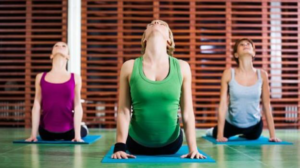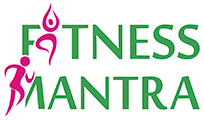Thyroid Disease: It is a medical condition which affects the function of thyroid gland. There are mainly two types of thyroid – Hypothyroidism caused by not having enough thyroid hormones and Hyperthyroidism caused by having too much thyroid hormones. Some of the most common symptoms of thyroid include fatigue, low energy, weight gain or loss, inability to tolerate the cold, slow or very fast heart rate, dry skin and constipation or diarrhea depending on what kind of thyroid it is. In both hypothyroidism and hyperthyroidism, there may be swelling of a part of the neck, which is also known as goiter.
Yoga and meditation can help in relieving a lot of issues associated with thyroid. A stressful lifestyle can be a major contributor to thyroid but it can be managed by indulging in peaceful yoga sessions every morning.
Here below 5 Asanas help to cure thyroid:
- Sarvangasana (Shoulder Stand Pose):
It helps in stimulating thyroid glands and controls thyroxin. In this particular pose, the blood flows from the legs to the head region due to the inverted pose which helps in mitigating thyroid.
Steps to follow:– Get into Savasana (corpse pose).
- Now, bring together your feet and place your hand sideways close to your body.
- Bring your legs close to your chest.
- Lift your lower body slowly (similar to Hal asana or plough pose).
- Take your hands, place them on your back and slowly lift your legs up.
- Your entire body should be in a straight line with your upper arms supporting your back.
- Hold the pose – begin with 10 seconds – breath normally.
- Now slowly fold your leg from the knee.
- With the support of your hands, get your upper body down.
- Get back on the mat and rest.
- Lie down in Savasana for as long as you held Sarvangasana. Don’t get up with a jerk instantly after finishing it.
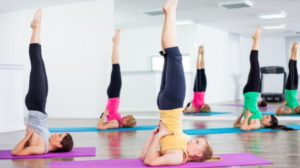
- Halasana (Plough Pose):This exercise gives compression to the neck thereby, stimulating the abdominal and thyroid glands. It also calms the brain and reduces stress and fatigue. The pose resembles to the Indian plough, hence it is called Halasana. This is also very good asana for lower your blood pressure.
Steps to follow:
- Grab a mat and lie down straight with your hands on the side.
- Slowly raise your legs together followed by your hips. At this point you can also use your hands to support your back.
- Take your legs backwards, over your head, towards the floor.
- Gently, place your toes on the ground. Then, place your arms back on the side.
- Hold this pose for as long as you can and while you do, breather slowly and keep looking forward.
- As the blood rushes to your head, pace your breath and count to 100.
- Once you’re done, hold your lower back with your hands and bring your legs back to lie down straight. Exhale while you do this.
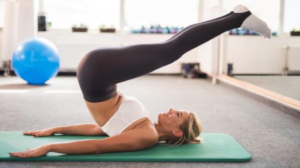
- Matsyasana (Fish Pose):-This pose takes the form of a fish and therefore, it is called the Matsyasana. It stretches your neck hence stimulating the thyroid glands. This asana provides gentle healing suited to the needs of thyroid patients, lowers stress levels and reduces the stiffness of muscles and joints. It helps in relaxing the body and preventing mood swings and depression which thyroid might cause.
This is an incredible asana for back issues.
Steps to follow:
- Lie down on your back with legs wide apart.
- Now, bring together your legs and your hands – palms out, over your head, point your toes out and go into a full body stretch.
- Repeat twice, focusing on your breathing, inhaling and exhaling.
- Now, keep your hands under your torso nearing the glutes. Bring in the hands as much as possible.
- Lift up your body with your weight resting on your elbows.
- Drop your head back and arch your back with your feet together but relaxed.
- Relax your body, focus on your breathing, relax your eyes, head and mind.
- Keep inhaling and exhaling.
- Bring your head back up, look at your toes and slowly drop your body down.
- Move your palms out, keep your hands and legs apart, relax.
- Roll your wrists to release the pressure off them.
- Move you neck left to right.
- Bring your toes together, interlock you fingers and put your hands at the back of your neck.
- Now, counter the neck position. Go in the front, left and right, diagonally with your back intact on the floor.
- Setubandhasana (Bridge Pose):-If you are able to perform the bridge pose successfully, you will be able to stretch your neck to quiet and extent and activate the thyroid glands. It helps in calming the brain, reducing anxiety and improving the digestion system.
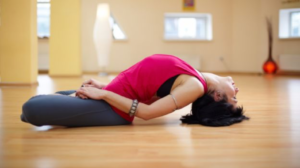
Step to follow:
- Lie on the mat with your back on the floor.
- Draw your feet inwards towards the hips.
- Your feet should be parallel to each other.
- Knees should not be pointing outwards.
- Now lift yourself up with your stomach going towards the ceiling along with your back, hip and thighs.
- Chin and chest should be locked.
- You can either keep your hands sideways or engage them in supporting your back. You can also clasp them under your back and stretch. Inhale while going up, hold, and exhale while coming down. Breathe normally in case you are holding the pose for long.
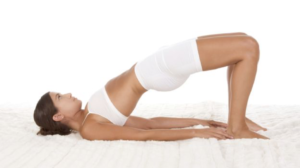
- Bhujangasana (Cobra Pose):-During this pose, there is a lot of compressing and stretching which helps in regulating the thyroid glands. This pose helps in improving blood circulation and the flexibility of upper and middle back, strengthens the entire back and shoulders, tones the abdomen, expands the chest and reduces stress and fatigue.
Step to follow:
- Start in the prone position, by lying flat on your stomach on a comfortable, level surface (preferably a yoga mat).
- Make sure your feet are together, with the toes against the floor. “Spread your hands on the floor and ensure you elbows are placed close to the rib cage.
- Close your eyes and inhale slowly. “Focus more on inhaling.
- Feel the stability in your pelvis and thighs, imagine them rooted to the ground throughout Bhujangasana.
- Exhale gradually before opening your eyes. Continue breathing slow and deep.
- As you inhale, make a gently effort to push the chest forward and steadily straighten your arms.
- Deepen your stretch to create a graceful, even arc in your back. “Your navel should be off the mat by maximum 5 cm. Ensure you’re stretching just as much as you can; do not force.
- Keep your shoulders broad, but relaxed. Lift from the top of your sternum, but avoid pushing the front of your ribs forward.
- Try to distribute the stretch evenly along your spine. Breathe calmly and hold here for 5 to 10 breaths.
